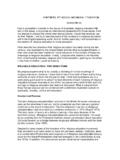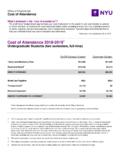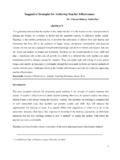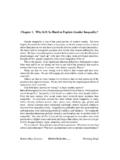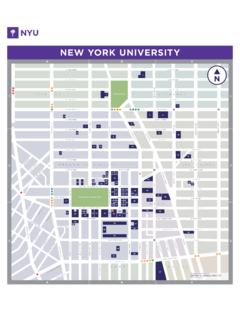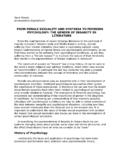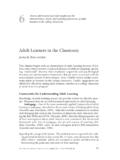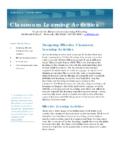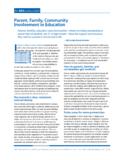Transcription of Cyber-Bullying in the Online Classroom: Faculty as …
1 Cyber-Bullying in the Online classroom : Faculty as the Victims Michael T. Eskey, Michael T. Eskey, Jr., DPA. Abstract The increase of Online learning resulted in a subsequent rise of Cyber-Bullying . Bullying has typically been found in the workplace and between students in the classroom , outside of the classrooms, and in many forms of social media. Most recently, Faculty members have become targets and victims of Online bullying. For many, there are not established policies or training on how to react. The current research addresses the scope of the problem, a review of the findings of Cyber-Bullying related to a university with a majority of students and instructors Online , and a plan for addressing the problem through policies, training, and professional development.
2 Rise of Cyber-Bullying Bullying in schools is not a new phenomenon. Many students and instructors have been involved in bullying as the recipient, witness, or even perpetrator in the capacity of instructors, administrators, or students. Typically, bullying is first associated with elementary and junior- high school. For many, this progressed to high school; but, this has progressed less frequently at the college and work-place level. The number of students enrolled in Online courses is increasing on an annual basis. With the growth, Online learning there has been an increase of cyber-assaults, written & verbal assaults, and other forms of Cyber-Bullying .
3 There is an increasing amount of research on both student and Faculty -related Cyber-Bullying . Additionally, there are a number of related definitions and strategies in the process of development to combat this growing problem. In the fall of 2011. there were million college students of which only 16 percent were attending as traditional 4- year college students living on the college campus (Allen and Seaman, 2013). Experiences with Online learning have noted increases in verbal assaults and Cyber-Bullying (and Online learning increases the potential for Cyber-Bullying ). This changes many classroom . philosophies. Students are becoming the customer and higher education, following more of a business model, which increasingly expresses a shifting of focus on the student, is inclined more so treating the student as a customer than as a traditional student.
4 Cyber-Bullying can be defined as the use of electronic devices such as computers, iPads, cell phones, or other devices to send or post text or images intended to hurt, intimidate, or embarrass another person, to include such behavior as: Flaming: Online fights using electronic messages with angry and vulgar language. Harassment and stalking: Repeatedly sending cruel, vicious, and/or threatening messages. Even one message could constitute Cyber-Bullying depending on the circumstances. Often times when this occurs instructors are unprepared to react and where to seek support. Mobbing: This is a group of students Cyber-Bullying a particular instructor.
5 There are certainly a number of other related - definitions that may be added to this critical problem (Hinduja & Patchin, 2011). The Internet has only been around for a few decades. The legal system is still changing and evolving to respond to changes in technology and social media. Cyber bullying laws in particular are part of this dynamic legal landscape. As of July 2014, only one state did not have Cyber-Bullying laws. Unfortunately, many of these laws really just apply to kids in high school, middle school, and grade school. These laws ignore the fact that this behavior could continue into college and the workplace. As such, college students and college professors are often not protected.
6 However, some states do have laws protecting citizens from Cyber-Bullying . Some localities could also have anti-bullying laws. Although no Federal law broaches Cyber-Bullying a myriad of states have enacted laws that could apply depending on the factual scenario. Beyond that, many educational institutions have created their own student codes of conduct that could apply to Cyber-Bullying depending on how they are written. This section will explore these issues. As Noted: No Federal laws specifically apply to Cyber-Bullying , per se. For example, Park University has 40 campus centers located in 21 states, the following examples of state laws denote the diversity of Cyber-Bullying laws in three states where Park is located North Dakota, Georgia, and Florida.
7 Not only are they different, but enforcement is different; for example: North Dakota - House Bill 1465 defines bullying and requires school districts to have bullying policies by July 1, 2012. Bullying means: a. Conduct that occurs in a public school, on school district premises, in a district owned or leased school-bus or school vehicle, or at any public school or school district sanctioned or sponsored activity or event; b. Conduct that is received by a student while the student is in a public school, on school district premises, in a district owned or leased school-bus or school vehicle, or at any public school or school district sanctioned or sponsored activity or event.
8 Conduct includes the use of technology or other electronic media. Code (2009) makes harassment via phone, in writing or via electronic communication a Class A misdemeanor. Georgia - Proposed: The End to Cyber-Bullying Act includes off campus and cyber- bullying SB 250 (2010: Students found bullying third time in school year are sent to alternative school, requires that policies against bullying be posted in all middle and high schools, requires that bullying policies be included in student and parent handbooks. : by use of data or software that is accessed through a computer, computer system, computer network or other electronic technology of a local school system.)
9 Florida - HB 609, signed by governor in May 2013, took effect July 1, 2013. Added cyber- bullying to bill and includes explicit language allowing schools to discipline students for their off-campus harassment that substantially interferes with or limits the victim's ability to participate in or benefit from the services, activities, or opportunities offered by a school or substantially disrupts the education process or orderly operation of a school.. 699 s. : School Safety Jeffrey Johnson Stand Up for All Students Act : Consequences must be made clear by the school district (Hinduja, S., & Patchin, J. (2012). As of 2014, there are forty-nine states have Department of Education (DOE) harassment polices (which is normally how bullying is handled) (Beale & Hoel, 2011).)
10 Thirty-six states include Cyber-Bullying in their policies. Only 13 states give schools the ability to intervene when behavior off campus creates a hostile environment at school (Sacco, et al, 2012). Most colleges have student conduct policies and Faculty human resources policies. Enforcement is sometimes problematic and coverage can often take on protection of the student first. Other laws could also apply depending on how the bullying is manifested and escalates into other criminal areas ( , battery, assault). Conflicting legal concerns can include violating the free speech of individuals, or the bullying of students by the school.
